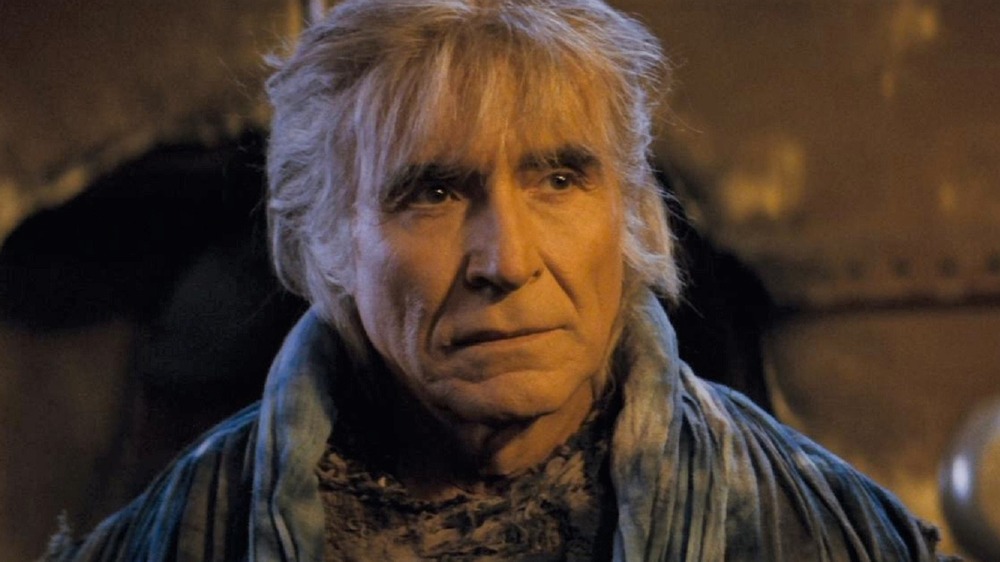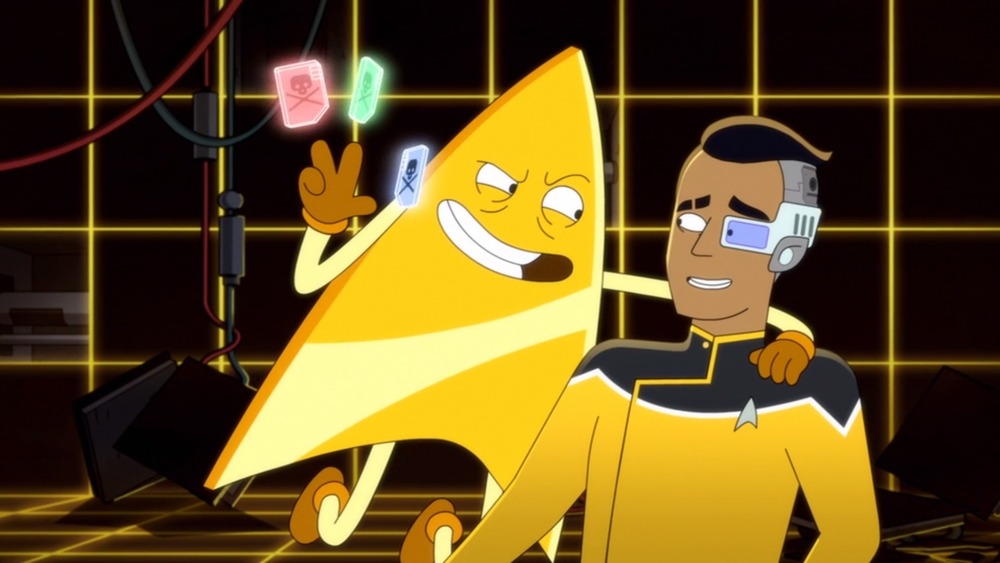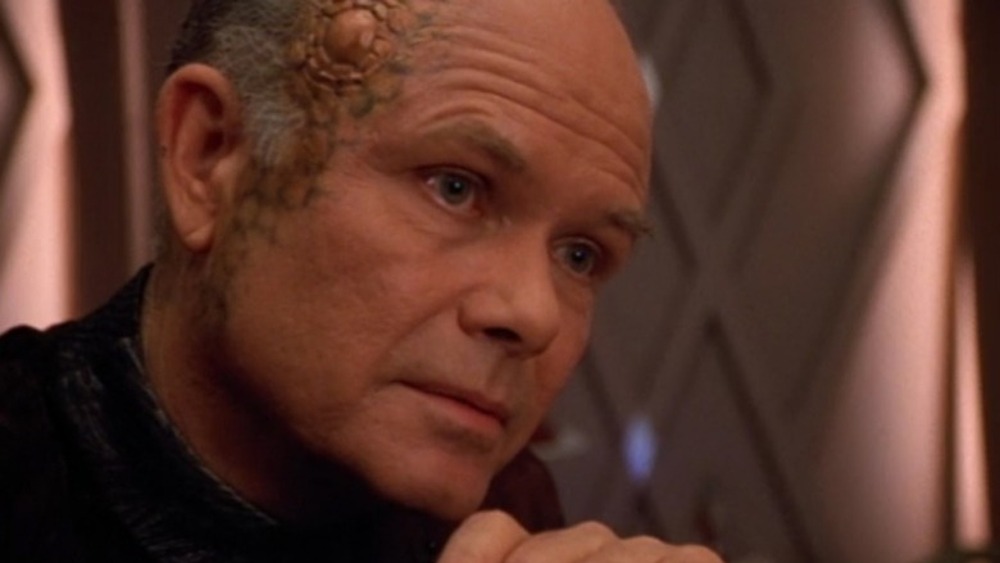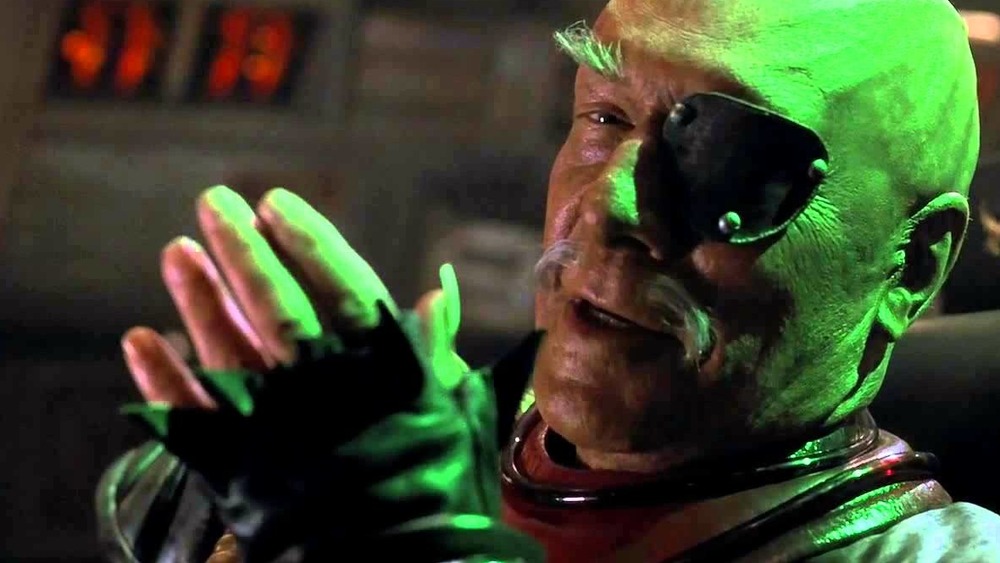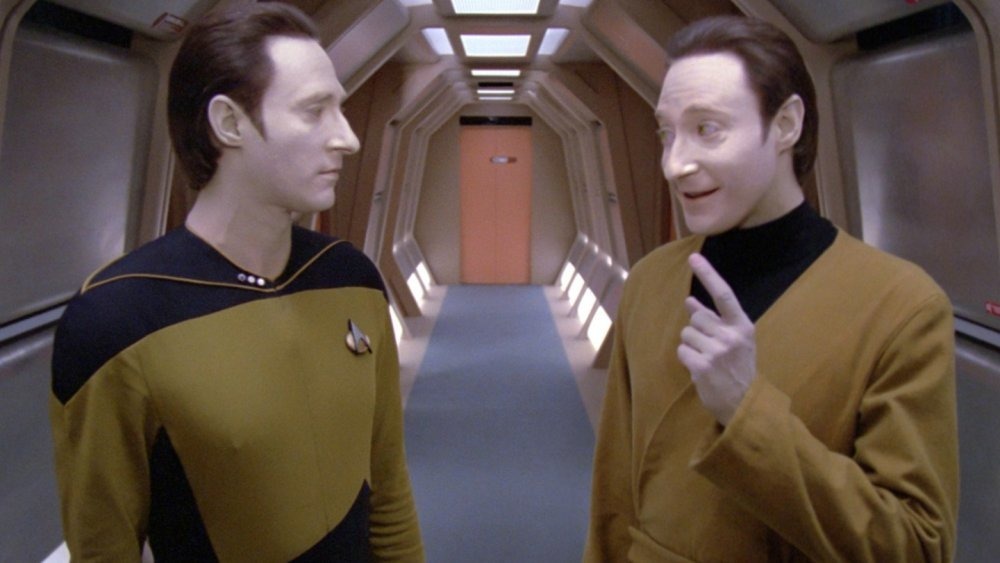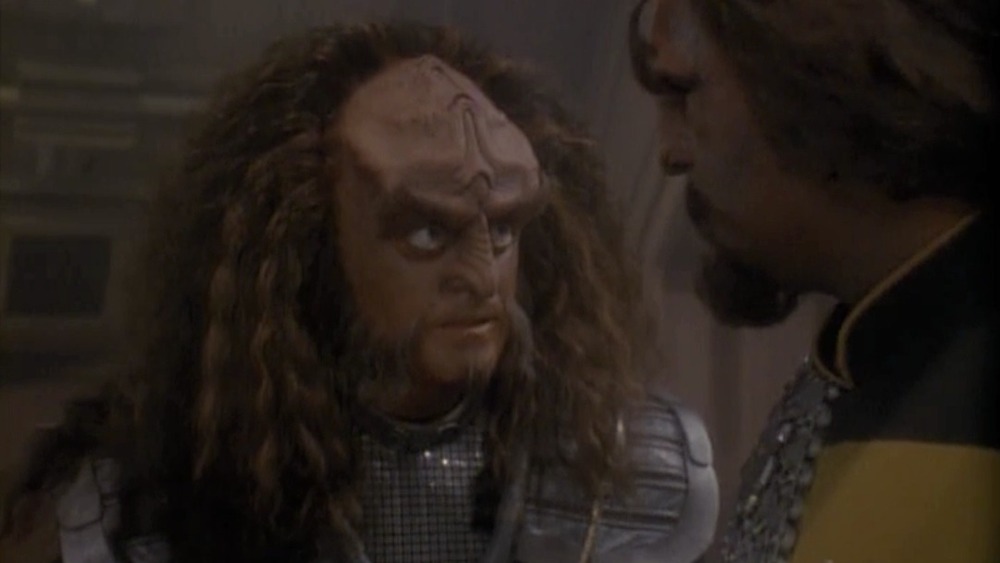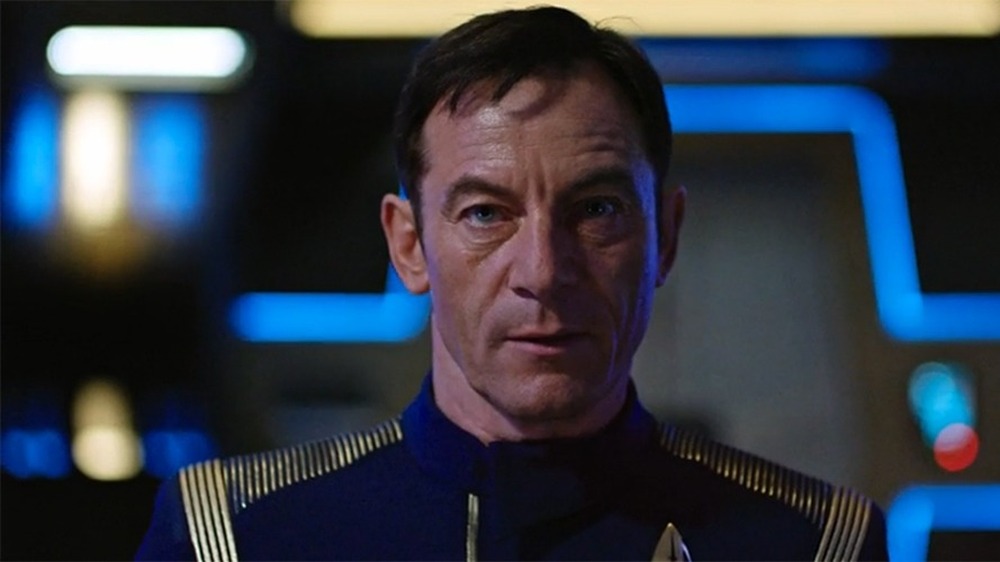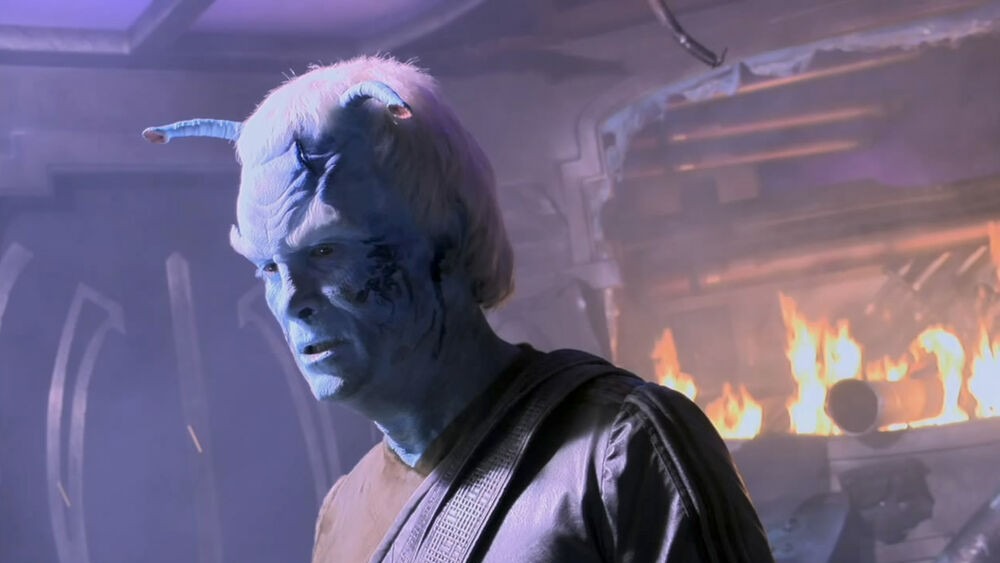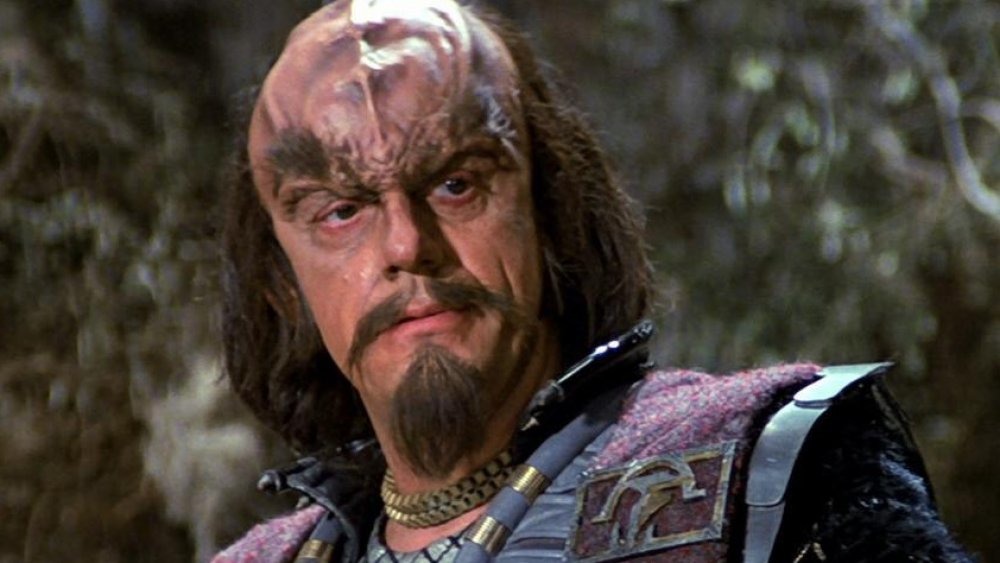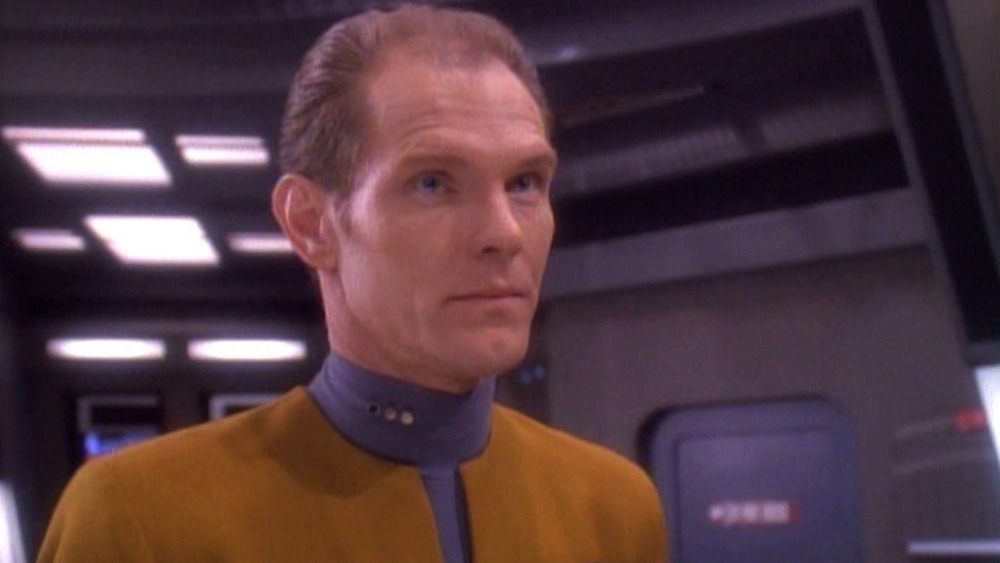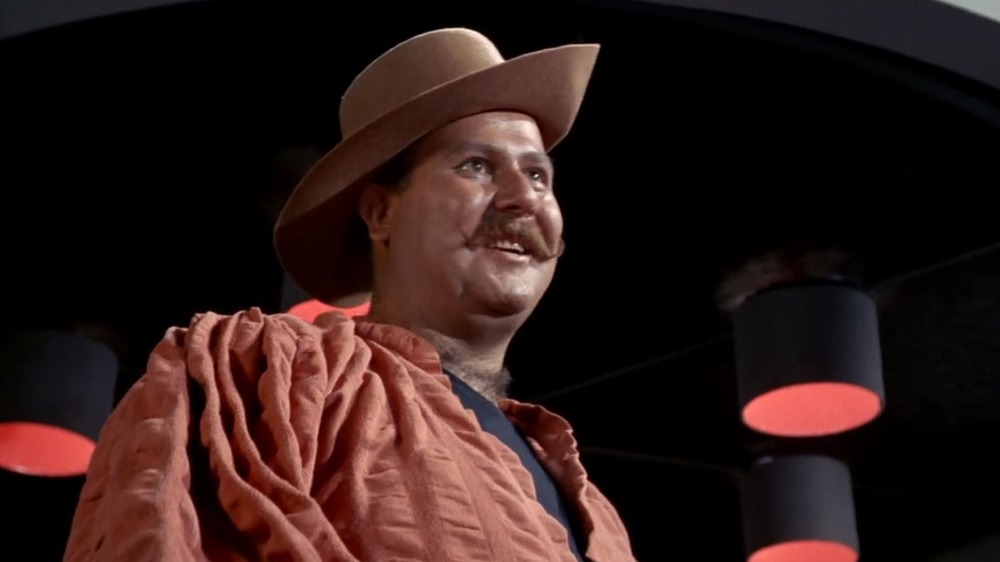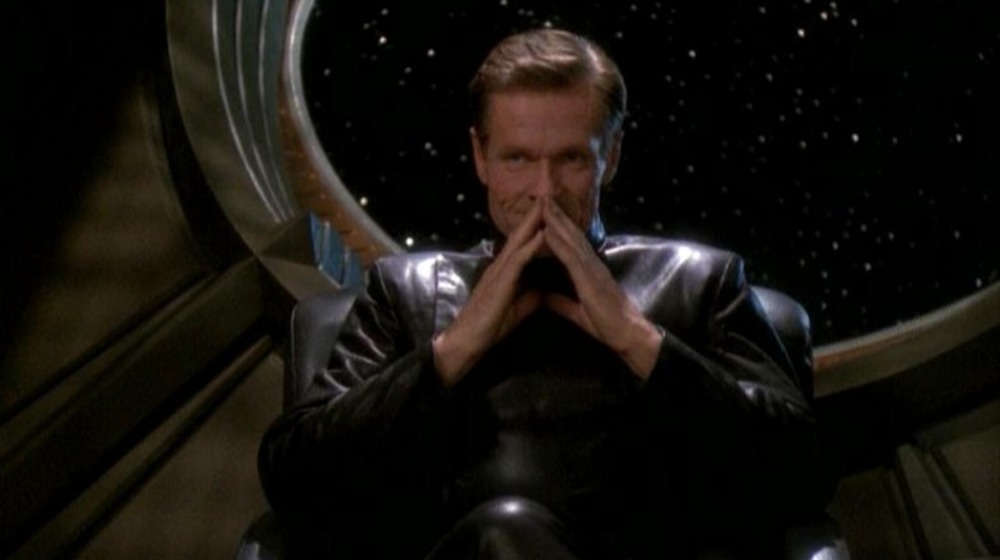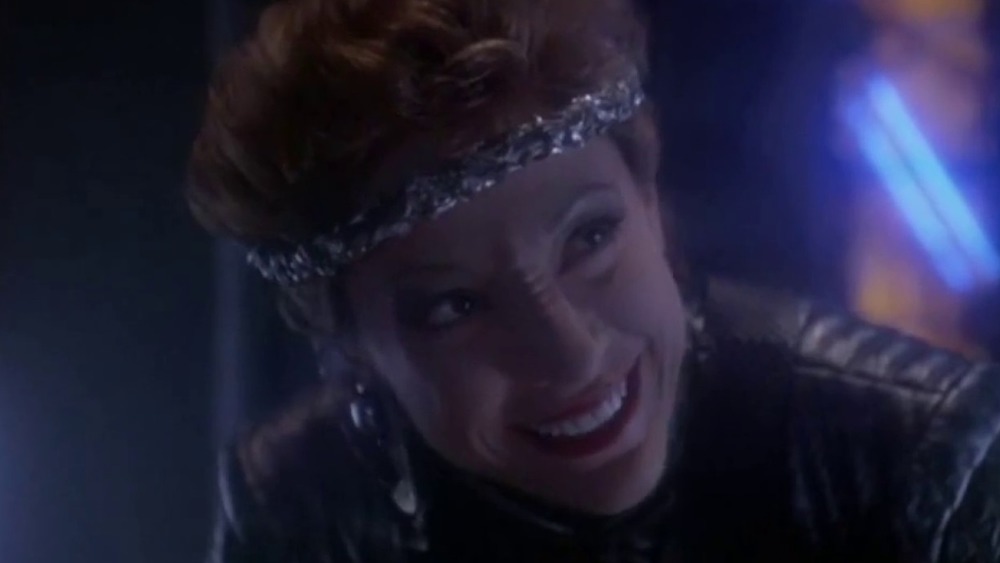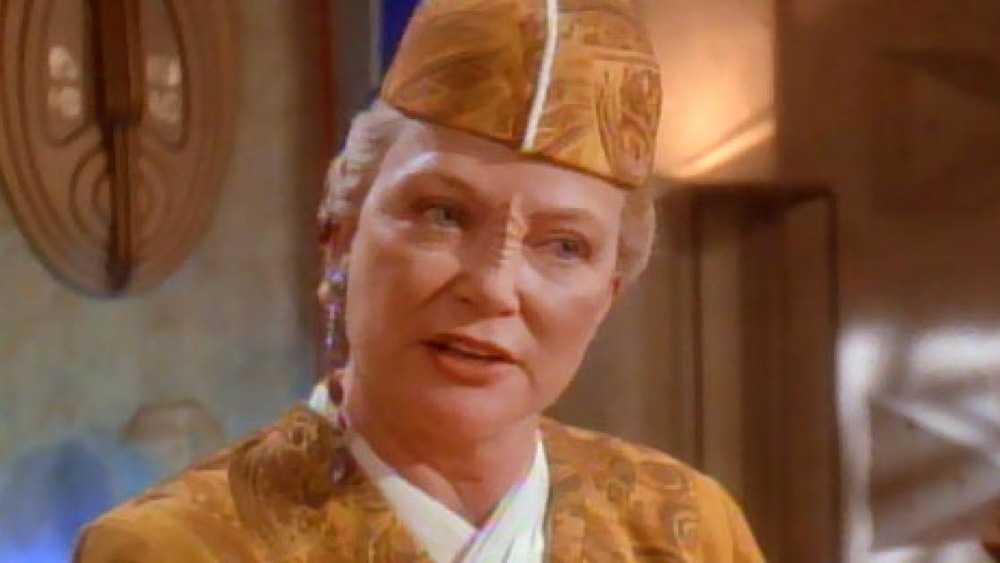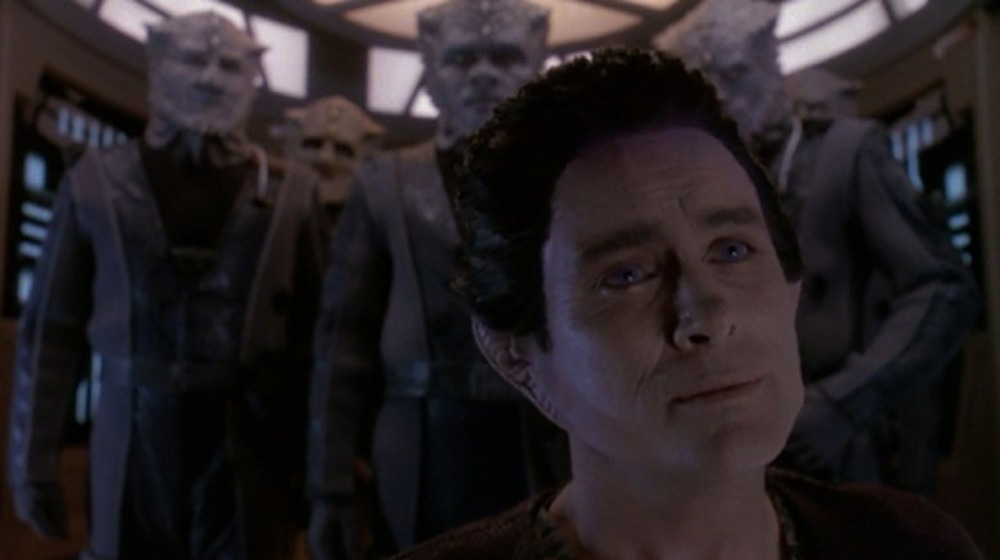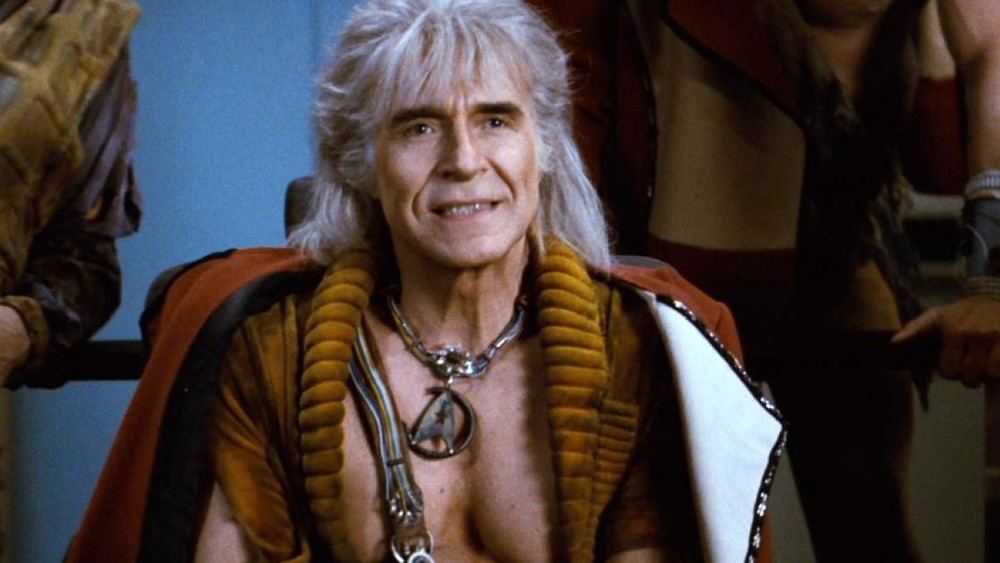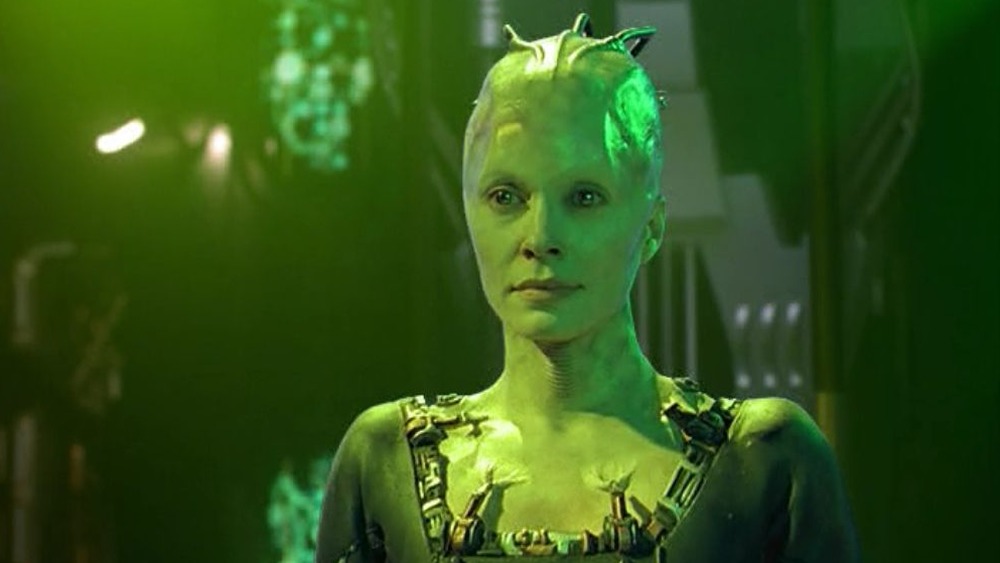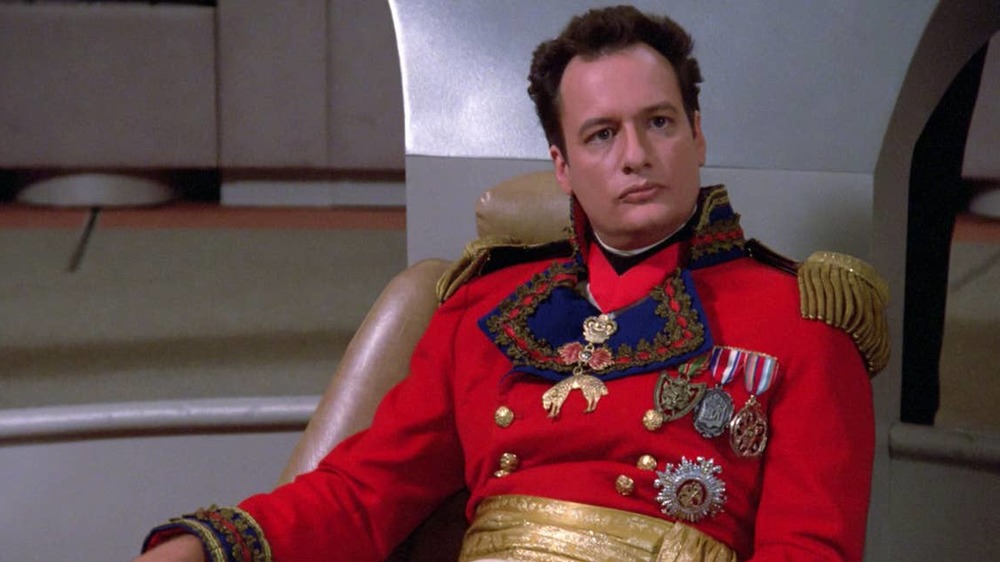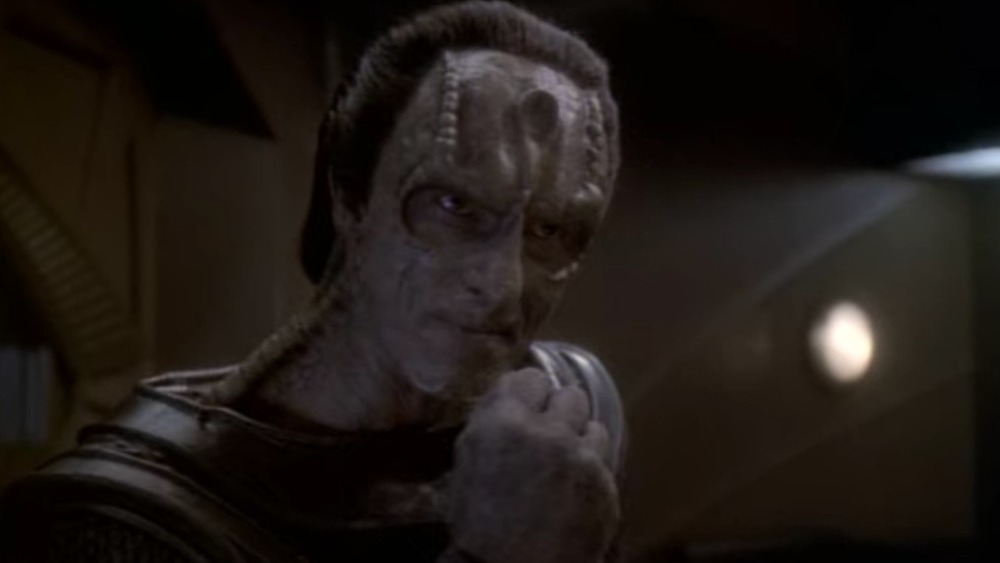The Best Star Trek Villains Ranked
Space — the final frontier. In that vast expanse, there waits mystery, challenge, and according to Star Trek, a bunch of gods, cyborg collectives, and countless species waiting to kill us, assimilate us, or test the boundaries of our civility.
Since Star Trek: The Original Series (TOS) premiered in 1966, the Trek universe has been feeding our imaginations with villains — from bizarre to embarrassing to utterly ruthless — for over half a century. Since many of the earliest Trek series were episodic, we didn't often get the chance to see the same bad guys return to hound the heroes. But as Trek experimented with serialized storytelling — particularly with Deep Space Nine (DS9) — the more promising space-faring antagonists got multiple chances to show how bad they could be or, in some memorable cases, to prove they weren't quite as bad as you thought.
Among Trek's villains are some of the most fun and memorable in popular media, and we thought we'd give you our own choices of who among them shines the brightest. Best lists are always subjective, but we're fairly confident there won't be too many disagreements for our picks of the best Star Trek villains, ranked from worst to best.
Badgey makes fun of both Star Trek and Microsoft
As one of the youngest Star Trek series with a much stronger focus on comedy, the animated Star Trek: Lower Decks doesn't boast a wealth of recurring villains. Regardless, one of the few reappearing bad guys from the series is one of the funniest and cleverest conceptions in the entire Trek franchise. Voiced by Jack McBrayer (best known as 30 Rock's Kenneth the Page), the holographic villain Badgey is a hilarious and brutal send-up of not only one of Star Trek's most tired tropes but of one of the most famously annoying aspects of Microsoft's software.
We first meet Badgey in season 1's "Terminal Provocations," when Ensign Rutherford (Eugene Cordero) introduces Ensign D'Vana Tendi (Noel Wells) to his holodeck training program. Acting like the animated paper clip "Clippy" from Microsoft Office and shaped like a Starfleet badge, Badgey at first seems eager to help Rutherford and Tendi with whatever they need. But when an attack by alien scavengers causes the holodeck to malfunction and disengage the safety protocols, Badgey takes the opportunity to get vengeance on the person he sees as his abusive creator — Rutherford. Sharing such Clippy-like homicidal gems as, "Fun fact: I'm gonna rip your eyes out!" and, "Here's a tip: I'm going to burn your hearts in a fire!" Badgey pursues Rutherford and Tendi across holographic landscapes until Rutherford figures out a way to defeat him.
Badgey makes a second appearance in the season 1 finale, and we hope we'll be seeing plenty more of him in the future.
Annorax is one of Star Trek's most sympathetic villains
Kurtwood Smith has made a number of TV and film appearances in the Star Trek franchise, but none of his characters are both as chilling and sympathetic as the brilliant scientist Annorax from season 4 of Star Trek: Voyager. He places a low on our list because he never reappears after the two-parter "Year of Hell," but he makes enough of an impression to earn a spot regardless.
Part of a race known as the Krenim, Annorax begins his cursed quest by seeking to restore his people's once expansive empire to power. To this end, he develops a temporal weapon called simply the "Weapon Ship," which he uses to wipe out other species — not simply killing them but making it as if they never existed in the first place. While his attempts do restore more and more of the Krenim Imperium, the restoration of a single colony eludes him every time — the colony of Kyana Prime, where Annorax's wife, children, and grandchildren lived until his actions unintentionally erased them. So he and his restless crew, protected from the time-space continuum within their ship, have continued like this for two centuries, committing genocide again and again to feed the obsession of a captain who's convinced time itself is claiming vengeance upon him.
While his time is brief, Annorax is one of the most quietly horrifying and tragic villains in the entire Trek franchise.
General Chang was a perfect rival for Captain Kirk
Few Star Trek villains simultaneously embody the sophistication, Shakespearean nobility, and ruthlessness of the late Christopher Plummer's General Chang. Plummer was a fitting choice not only because of his acting chops but because he was an important part of William Shatner's career. A decade before Shatner assumed the role of Captain Kirk, he was Plummer's understudy in a 1956 production of Henry V.
Chang appears exclusively in the final film to feature the complete Original Series crew, 1991's Star Trek VI: The Undiscovered Country. Chang is one of the architects of an alliance between rogue elements of the Federation, the Klingon Empire, and the Romulan Empire who are unwilling to see a lasting peace between Earth and Qo'noS. Chang plays a large part in the framing of Captain Kirk (Shatner) and Dr. McCoy (DeForest Kelley) for Klingon chancellor Gorkon's (David Warner) assassination, he prosecutes them in the unforgiving Klingon court, and he captains the prototype Bird-of-Prey that comes close to destroying both the Enterprise and the Excelsior toward the end of the film.
While Chang is ultimately unsuccessful, from start to finish he exudes a singular presence among Trek's rogues' gallery. Plummer is particularly impressive when he and the rest of Gorkon's entourage are leaving the Enterprise after a diplomatic dinner. In spite of not saying a single overtly threatening word or making any hostile gesture, his body language and facial expressions tell you everything you need to know in the scene — that Chang is eager to be the man who defeats Kirk in battle.
Data's evil brother was a fun and formidable foe
The android Data is unquestionably one of the fan-favorite characters from Star Trek: The Next Generation. But one of the downsides of portraying the android is that — except in instances when something causes Data's programming to go haywire (which, admittedly, is often) — the emotional spectrum that actor Brent Spiner gets to play with is fairly limited. That changes just a little bit with the season 1 introduction of Data's evil brother, Lore, in "Datalore."
Unlike Data, Lore is "gifted" with human emotions, but unfortunately, he receives them long before Dr. Noonian Soong has truly learned to properly program them. As a result, Lore is unstable and treacherous. It's eventually discovered that it's Lore who summoned the powerful Crystalline Entity that destroys all human life on Omicron Theta — the planet upon which both androids are discovered. After Lore is reassembled, he deactivates his brother and assumes Data's identity in an attempt to feed the crew of the Enterprise to the Crystalline Entity. And in his final appearance — the two-part "Descent" bridging the sixth and seventh seasons — he becomes something of a cult leader to a group of Borg who've liberated themselves from the Collective.
As humorous as he is evil, Lore is one of the most fun villains to show up on The Next Generation (TNG). At the same time, his appearances often pack an emotional punch, since the evil android remains one of the few creatures Data can call family.
Gowron isn't always a villain, but when he is, he threatens the entire Federation and more
First appearing in the season 4 TNG episode "Reunion," Gowron isn't always a villain. He's introduced as one of two contenders for the Klingon chancellorship, a title he eventually achieves. For the most part in his TNG appearances, Gowron is more of a neutral character pursuing his own agenda. This changes once TNG ends and Gowron becomes a recurring character on Star Trek: Deep Space Nine.
While his first DS9 appearance is season 3's "The House of Quark," Gowron doesn't become an important part of the show's serial drama until Michael Dorn's Worf joins the series in the season 4 premiere "The Way of the Warrior." While still perfectly expressing the trademark Klingon passion for battle, on DS9, Gowron is portrayed more as an opportunistic politician. He uses the threat of the Dominion to reignite his people's warlike tendencies with an invasion of Cardassia and, later, a new war with the Federation. During the epic war storyline in the show's final season, Gowron purposely wastes the lives of his warriors by sending the forces of General Martok (JG Hertzler) — who he sees as a political rival — to fight battles they can't win in order to humiliate Martok.
Played expertly by Robert O'Reilly in all of his appearances, Gowron is an unforgettable Klingon villain with some of the craziest eyes you'll ever see.
Gabriel Lorca fooled us all
For most of Star Trek: Discovery's inaugural season, Jason Isaacs' Captain Gabriel Lorca commands the eponymous vessel. While he has a mysterious air early in the series, you're convinced he's the real deal because of his leadership skills and what appears to be an unwavering dedication to his crew.
That changes after the Discovery winds up in the Mirror Universe in the final moments of "Into the Forest I Go." For most of the time Discovery is in this strange, much more brutal reality, no one seems to know exactly how they got there. It isn't until the third-to-last episode of the season, "Vaulting Ambition," that we learn Gabriel Lorca is a Mirror Universe native. Having switched places with his Prime counterpart before the events of the series, Lorca sees the potential of Discovery's spore drive to bring him back home so he can continue his rebellion against Emperor Philippa Georgiou (Michelle Yeoh).
Arguably, just the fact that Lorca is able to pull the wool over so many viewers' eyes is enough reason to earn him a spot on this list. But Isaacs' superb acting and the layered conception of the character earn the accolades all on their own. Lorca is able to fool us precisely because he isn't simply a mustache-twirling bad guy. While he's using the Discovery crew for his own ends, he bears no ill will toward them, and in some ways, the respect and care he shows for them is genuine ... until it isn't.
Shran walks the line between friend and foe
A lot of fans would balk at the idea of the blue-skinned Commander Shran being labeled a villain. Portrayed by Jeffrey Combs — who's played more roles on Star Trek shows than most — Shran is an Andorian fiercely loyal to his people who's introduced in Star Trek: Enterprise's (ENT) first season. We meet Shran in "The Andorian Incident" when he leads a squad of his blue-skinned brethren in the violent takeover of a Vulcan monastery. Shran and the other Andorians come off as paranoid and xenophobic bullies. But in spite of their thuggish behavior, Captain Archer (Scott Bakula) discovers they're right about the monastery being a cover for a Vulcan facility monitoring the Andorians. When Archer exposes the truth, he earns an uneasy ally in Shran.
Shran comes to the aid of Archer and the Enterprise on more than one occasion. In particular, in season 3, Shran bails the heroes out twice, including in the final battle to save Earth from the Xindi's doomsday weapon. But there's always a volatility working under Shran's surface, threatening to once more put him at odds with Archer and his crew. It happens, for example, in season 4's "United" when Shran's stubborn refusal to give the Tellarites the benefit of the doubt leads to Archer challenging him to a death duel.
Commander Kruge is one scary Klingon
For the most part, Christopher Lloyd's most famous characters – like Doc Brown in the Back to the Future series — aren't particularly intimidating. So it's a testament to the actor's range that he performed so well as the Klingon Commander Kruge in 1984's Star Trek III: The Search for Spock. When Kruge learns of Starfleet's secret Genesis project — meant to instantly turn lifeless celestial bodies into habitable planets — he means to seize it as a doomsday weapon for the Klingon Empire. In the process, he orders the murder of Captain Kirk's son — a death that scars Kirk for years.
In many ways, Kruge is the first example of the kind of Klingon we'd see in the subsequent Trek movies, as well as the Star Trek: The Next Generation era of TV series. While the Klingons' new look is seen briefly in 1979's Star Trek: The Motion Picture, it isn't until Kruge that we get to see a fully fleshed-out performance. While the Klingons were always warlike, Kruge and his crew are more brutish than their predecessors in TOS. Locking himself in a death grip with an alien beast just for fun and going mano a mano with Kirk as Genesis is in its explosive death throes, Kruge gives us a portrayal of what remains one of the most potent examples of the Klingon passion for combat.
Benjamin Sisko is no fan of Michael Eddington
You don't find a lot of Trek villains wearing Starfleet uniforms. After all, the desire to join Starfleet is usually accompanied by a drive to uphold the values of the United Federation of Planets. But one notable exception is Lieutenant Commander Michael Eddington (Kenneth Marshall). Introduced in DS9's season 3 premiere, Eddington starts out as an officer who appears to be overly concerned with promotion and more than willing to turn in the heroes of DS9 if they dare disobey their Starfleet superiors.
Toward the end of season 4, we learn Eddington's seemingly tireless devotion to Starfleet is a ruse. In "For the Cause," Eddington tricks most of DS9's command crew away from the station, and in their absence, he steals a shipment of industrial replicators, revealing himself as a member of the Maquis — a group of violent rebels who oppose the Federation's treaty with Cardassia and wage relentless guerrilla war against the aliens.
The very fact that Eddington is able to pull the wool over his eyes makes Benjamin Sisko (Avery Brooks) obsessed with capturing the traitor. He's one of the few villains capable of getting so thoroughly under a series captain's skin, to the point where Sisko actually humors some rather questionable tactics in apprehending him.
Harry Mudd is a truly conniving Star Trek villain
The flamboyant and deceptive Harry Mudd is one of the few named antagonists from TOS to enjoy a second appearance. He first shows up played by Roger C. Carmel in season 1's "Mudd's Women," trying to sell women like cattle and using an illegal drug to render them physically irresistible. Later in season 2's "I, Mudd," the con man gives up the Enterprise crew to a group of androids with dreams of galactic conquest.
Carmel returned to voice his famous crook in "Mudd's Passion," an episode of Star Trek: The Animated Series. He runs afoul of the Enterprise once more after attempting to con the inhabitants of an alien planet into believing he could sell them Starfleet Academy.
That wouldn't be the end of Mudd. Rainn Wilson (best known as Dwight Schrute on The Office) plays a more vicious version of Harry Mudd in Star Trek: Discovery's (DISCO) first season. Captain Lorca (Jason Isaacs) meets Mudd in "Choose Your Pain," when they're both prisoners of the Klingons, and Mudd is more than happy to give up his fellow humans to avoid a beating or two. After Lorca and Lieutenant Ash Tyler (Shazad Latif) leave Mudd behind when they escape the Klingons, the con man gets revenge with a plot involving a time manipulation device in "Magic to Make the Sanest Man Go Mad."
Luther Sloan is a complicated character
One of the most popular pieces of Trek mythology introduced by DS9 is the clandestine organization Section 31. And William Sadler's brilliant performance as Luther Sloan — the director of Section 31 during the events of DS9 – is one of the main reasons for the group's popularity.
Suspecting Dr. Bashir (Alexander Siddig) of being an unwitting spy for the Dominion, Sloan first shows up on DS9 using a holodeck to find out the truth. He subjects Bashir to an elaborate illusion, in which all of his friends on DS9 turn their backs on him. Once Bashir discovers the truth, Sloan is convinced of Bashir's innocence and offers him a position with Section 31. In spite of Bashir's clear refusal, Sloan soon returns to use the doctor in a covert operation involving infiltration of the Romulan Empire. Toward the end of the series, we learn Sloan is behind poisoning Odo (Rene Auberjonois) and all of his people with a deadly plague.
Sloan is a singular Trek villain. He's ruthless, cunning, and mysterious, but he's surprisingly sympathetic. He's aware of the hypocrisy of betraying the Federation's core values in order to protect it, yet he still believes in what he's doing and has no ill will towards Bashir for despising him. He sees Bashir as exactly the kind of man he was born to protect, even if in safeguarding him, he earns nothing but Bashir's disgust.
Intendant Kira is one of Star Trek's most sadistic bad guys
Introduced in TOS' "Mirror, Mirror," the Mirror Universe is an alternate dimension where the Federation is replaced by the tyrannical Terran Empire. Rather than living by values like tolerance, diplomacy, and discovery, the Terrans are a brutal people believing in conquest and cruelty. But in DS9's "Crossover," Dr. Bashir and Major Kira (Nana Visitor) find themselves in the alternate universe, where they learn that since the events of TOS, the Terran Empire has been conquered by the Klingon-Cardassian Alliance. Terrans have become a slave race, and DS9 — retaining its original Cardassian name Terok Nor — is led by Intendant Kira.
Intendant Kira is the cold-blooded counterpart to Major Kira, and the character gives Visitor a chance to show us her acting range. Other than the Kiras of both universes sharing the quality of natural leadership, Intendant Kira is a wild departure from Major Kira. She's seductive, with an unapologetically endless appetite for pleasure, using Sisko — a pirate in the Mirror Universe — as her personal plaything. She's as vicious as any of the Cardassians or Klingons under her command and deceptively sadistic, sometimes acting as if she's about to absolve her victims before ordering their executions.
Intendant Kira was far too much fun for just a single DS9 episode. She's a recurring villain, including showing up for all of DS9's Mirror Universe stories.
Kai Winn's tale is a tragic one
You hear a lot about villains you "love to hate." But then there are villains you just straight-up hate. Kai Winn is definitely one of the latter.
Louise Fletcher — Nurse Ratched in 1975's One Flew Over the Cuckoo's Nest — plays Winn on DS9, beginning as an ambitious vedek of a rigid religious order on Bajor. Winn is a slippery and manipulative vedek, working behind the scenes in coup and assassination attempts. Her actions, she claims, are always at the service of the Prophets — the aliens living inside the wormhole who the Bajorans worship as gods — yet it seems she's always working towards her own ascension in the ranks of Bajor's clergy. She succeeds in becoming Bajor's spiritual leader, the Kai, but by the end of the series, her jealousy towards Ben Sisko, her seduction by Gul Dukat (Marc Alaimo), and her anger toward the Prophets leads her to finally abandon her religion and follow the devilish Pah-wraiths.
Winn is one of the most interesting and complex villains in all of Trek. Her downfall is tragic in the most classic sense of the word. Once she wins the title of Kai, rather than simply basking in her power as we expect, she seems to genuinely want to help her people. The problem is, of course, she also seems to fully believe that the ends justify any and all means.
Weyoun steals the spotlight with his manipulative charm
What if you could genetically engineer a race to be equally cunning leaders and diplomats in the most hostile of situations? What you come up with might look a lot like the Vorta, the Dominion's lieutenant race, leading the hordes of brutal Jem'Hadar while being completely subservient to the Founders. And of the Vorta we meet on DS9, none is more memorable than Jeffrey Combs' Weyoun. While Weyoun dies at the end of his first appearance in season 4's "To the Death," the villain was just too good to keep dead. So, it was decided that the Founders keep clones of the Vorta always at the ready, complete with the memories of their predecessors.
As the head of the Dominion's military in the Alpha Quadrant, Weyoun shows up often in the last two seasons of DS9, and he steals every scene he's in. He's dishonest and manipulative without shame, ready to shift from intimidating to conciliatory at a moment's notice. In scenes with politically influential DS9 characters like Ben Sisko and Gul Dukat, Weyoun uses conversation like a deadly, evasive weapon — always adapting to his counterpart's mood with everything from wrath to abject apology. He lies so easily that you wonder whether or not Weyoun knows, or even cares, what's true or false.
The Prime Universe's Khan Noonien Singh is obsessed with revenge
Any list of best Star Trek villains that doesn't include Ricardo Montalban's Khan needs to delete everything and start over. First appearing in TOS's "Space Seed," Khan is a genetically enhanced despot who ruled over a quarter of the Earth before escaping the Eugenic Wars with 84 of his followers. The Enterprise crew soon regrets waking Khan and his people from suspended animation once they take over the ship.
While Khan is a fun villain in his first appearance, his appeal doesn't reach full bloom until 1982's Star Trek II: The Wrath of Khan, arguably the best Star Trek movie ever. Blaming Kirk for the tragedies that have befallen him since they crossed paths years earlier, Khan and his followers take over the U.S.S. Reliant and wage war on the Enterprise. While Khan's followers believe they're using the stolen Federation property for power and prosperity, it's soon clear their leader is willing to sacrifice everything — including his own life and theirs — to get revenge on Kirk.
Through Montalban, Khan becomes the absolute embodiment of all-consuming vengeance. The villain regularly either paraphrases or directly quotes lines from author Herman Melville. And just as Captain Ahab is obsessed with destroying the titular whale, Khan ultimately has no purpose left but vengeance against Kirk.
The Borg Queen is equal parts sexy and scary
In TNG's "Q Who," the Borg — one of the Federation's deadliest enemies — are introduced. The cybernetic, zombie-like, hive-minded bad guys kill with impunity. However, their goal is not to kill but to assimilate the technology and biology of other intelligent species into their collective to bring them closer to perfection. There are no individuals within the Borg Collective, but in 1996's Star Trek: First Contact, we're introduced to the Borg Queen, the living embodiment of the Collective's will.
The Borg Queen does something you wouldn't think possible with the Borg — she makes them sexy. In fact, she spends most of her scenes in First Contact seducing Data (Brent Spiner) with promises of pleasures he's never been capable of fully experiencing. But she's far from just a temptress. Particularly in her subsequent appearances in Star Trek: Voyager (VOY), the Borg Queen — played by both Alice Krige and Susanna Thompson at different points — conveys the singular horror of being confronted by a being who is, in her own words, "one who is many."
Speaking to Looper in early 2020, Krige shared interesting insights about playing the cybernetic villain, including just how old she thinks the Borg Queen is. "I think she was an entity that happened at the moment of creation," Krige explained. "And she's always been that and she always will be, and it is entirely abnormal."
Q is a delightfully devious trickster
Perhaps no other single villain has appeared in as many Star Trek series as John de Lancie's all-powerful Q. Showing up for the premiere of TNG, its finale, and a bunch of fun episodes in between, Q is a mischievous, godlike being who defies definition. He would eventually come to harass VOY's Captain Janeway (Kate Mulgrew) almost as much as he does Picard (Patrick Stewart), along with making brief but memorable appearances on DS9 and Star Trek: Lower Decks.
Hilarious and carefree, Q is so popular that it might be a problem for some fans to even call him a villain. But while he isn't wholly evil, he's certainly a villain in the sense that when he shows up, he's almost always an antagonist. While he usually reverses any direct harm he inflicts upon humans, he couldn't care less about those lost indirectly, such as the Enterprise crew members killed by the Borg in "Q Who."
Whether you see him as a good guy or a bad guy, de Lancie's portrayal of the trickster is one of the most delightful parts of TNG and VOY. Without him, after all, we'd never see a mariachi band on the Enterprise bridge, we'd never see Guinan plunge a fork into a dude's hand, and most importantly, we'd never see the Enterprise crew in Sherwood Forest.
Dukat is Star Trek's greatest villain
One of the places where DS9 excels over other Trek series is that its serialized storytelling allows for characters to evolve. And you can see this evolution clearly in the Cardassian tyrant Gul Dukat. Formerly the prefect of Bajor during its occupation, Dukat is none too happy to find a human sitting in his old office in DS9's premiere, and his fixation on Sisko and his crushing sense of inadequacy grow over the course of the series, to the point where it suffocates him.
The Dukat we meet in DS9's premiere isn't the Dukat we see in its finale. A characteristic Cardassian, Dukat spends the first few seasons of DS9 working towards the goal of once again finding himself ruling over the people of Bajor. He's not only unwilling to face the atrocities he committed, but he's so delusional that he harbors resentment for the Bajorans refusing to honor him with statues and plaques. For a time, he's something of an ally to the DS9 crew, but when the Dominion gives him an opportunity to seize control over all of Cardassia, he becomes the Alpha Quadrant's most feared warlord. Before the end of the series, he goes from conqueror to madman, madman to cult leader, and from cult leader to the powerful vessel of the Pah-wraiths — the Prophets' destructive adversaries.
Wonderfully portrayed by Marc Alaimo, Dukat is ultimately the most complex, believable, and twisted villain in all of Star Trek.
